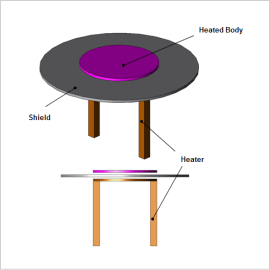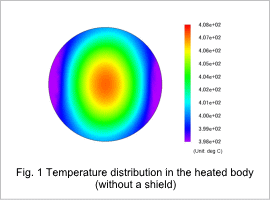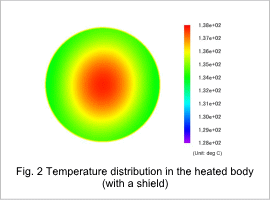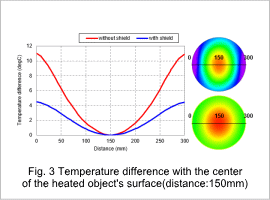Overview

It is necessary to properly handle the effects of the 3D geometry of the heated body or the heat generated from the heater in order to see whether it is raising the temperature uniformly, so a thermal analysis is carried out.
This Application Note explains how to carry out a thermal analysis using the thermal radiation phenomenon between a heater and a heated body to obtain the differences in temperature distribution in the heated body with and without a shield.
Temperature Distribution
The temperature distributions of the heated body depending on the presence of a shield (the range is the same) are shown in figures 1 and 2, and the temperature difference with the center of the heated body surface (distance: 150 mm) is shown in fig. 3.
From these results it becomes apparent that, while there is a difference in the absolute value of the temperature depending on the presence of a shield, when there is no shield there are irregularities in the temperature because heat transfer is being carried out directly to the heated body through thermal radiation from the heater. On the other hand, when there is a shield heat transfer is carried out uniformly to the heated body through the shield’s even heat distribution.





